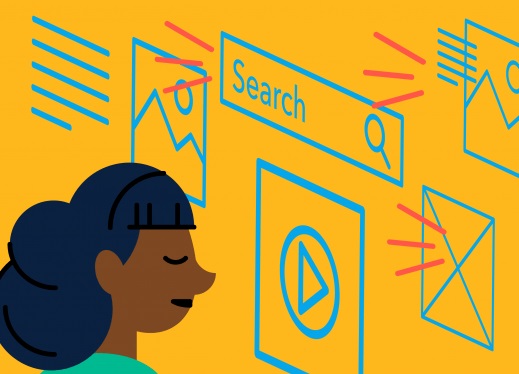For people with disabilities, it means equal access to online education, healthcare, employment and ecommerce. In the age of social media, it even means equal access to friendship and social growth. Web accessibility also fosters independence. It empowers users with disabilities to navigate websites and use digital products without needing to enlist support from a friend, family member, or worse, a stranger.
Simply put: we believe the world, online and off, is a better place when people of all abilities can participate in and access it. And we believe digital accessibility is necessary for creating that world.
Here’s what you need to know about digital accessibility, and why it’s so important today.
What is digital accessibility?
Digital accessibility refers to how usable a website, app or other digital experience is by all possible users, regardless of their ability or disability.
For example, if a person with a cannot access the content of a web page because they can’t use a mouse to hover and click on a link, that page is inaccessible. If that same web page offers other ways to consume the content — perhaps the ability to press a key to sift through and click the links without a mouse — it becomes more accessible.
Accessibility is a spectrum. Users have many different needs and preferences when it comes to using digital products, so there’s no one-size-fits-all accessibility definition. But best practices for web developers have been established, and are regularly updated.
Why is accessibility important?
One in four adults in the U.S. have some type of disability, according to the Centers for Disease Control. That number is only growing.
If we don’t work diligently to make the web accessible, we risk barring in some capacity a quarter of the adult population from participating in the world online. That means people with disabilities won’t be able to do things like take classes online, easily keep up with friends who move far away, or access important information about their own healthcare.
Simply put, web accessibility is important because so many people rely on the web to do critical day-to-day life activities. Not to mention, creating an accessible web is the moral and just thing to do!
Where does digital accessibility show up?
It’s easy to think of web accessibility as something that exists just on websites and mobile apps. In reality, it pops up everywhere.
For example, when a company like Netflix is thinking about digital accessibility, the streaming giant can’t just think of its platform, and making sure people can scroll around easily. It also needs to think of the actual content it shares with its audiences. That’s why Netflix offers closed captioning and audio description — so viewers who are hearing or visually impaired can follow along on their own.
Digital accessibility also helps people who don’t consider themselves disabled. If you’ve ever enlarged the text on your smartphone, for instance, you’ve enjoyed the fruits of digital accessibility.
Basically, if it’s digital, accessibility should be part of the equation, and it touches everything from how a website is developed to the most seemingly minor ways people connect to the web.
What can I do to make the world more accessible?
Anyone can make their own corner of the web more accessible.
Use social media? Think about adding alt-text — the technical term for simple image descriptions — to photos you upload to Facebook and Instagram. That way, people who might be visually impaired can better engage with your content. And that’s just a start — we’ve got a resource for social users interested in making their time online more accessible.
If you’re an employer, exploring how you can make your workplace more accessible and inclusive — digitally and in its physical space — can also go a long way in making employees with disabilities feel more welcome.
No act is too small. The point is to just keep accessibility in mind and stay willing to learn new things!
Digital accessibility is a huge boost for business
In the U.S., working age people with disabilities control nearly $500 billion worth of disposable income. Those people are much more likely to spend their hard earned cash with businesses whose platforms they can easily access.
It’s not just consumers with disabilities either! Seventy percent of millennials actively consider a company’s values when making a purchase.
Translation: digital accessibility is not only good for the world — it’s smart business.
Want to learn more?
Test your knowledge on digital accessibility with this short quiz!
Or if your workplace is ready to go all in on digital accessibility, don’t hesitate to reach out to us at Perkins Access, our digital accessibility consultancy. We’ve got the expertise to guide you through your accessibility journey.
